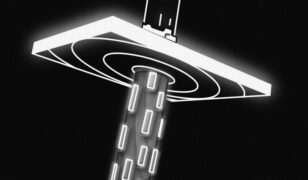Lockheed Martin conducts first fully autonomous surveillance mission with robots

Support System
Lockheed Martin, in collaboration with the U.S. Army Tank Automotive Research, Development and Engineering Center (TARDEC), successfully conducted a fully autonomous resupply, reconnaissance, surveillance and target-acquisition demonstration using its Squad Mission Support System (SMSS) unmanned ground vehicle, K-MAX unmanned helicopter and Gyrocam optical sensor.
During the “Extending the Reach of the Warfighter through Robotics” capability assessment at Fort Benning in Georgia, K-MAX delivered SMSS by sling load to conduct an autonomous re-supply mission scenario for soldiers defending a village.
At mission completion, SMSS proceeded to an observation point where it raised its Gyrocam sensor and began scanning the area for enemy forces. In an actual mission, upon observation of enemy forces, the remote operator would notify the commander on the ground, who would assess the threat and determine the appropriate method of neutralizing it.
“Fully autonomous capabilities, as we’ve just demonstrated, will allow service members to focus on important missions and remain out of harm’s way,” said Scott Greene, vice president of ground vehicles for Lockheed Martin Missiles and Fire Control. “This successful demonstration with both unmanned air and ground vehicles shows us that these missions are not only possible, but can be available much sooner than you would expect.”
“The synergistic use of unmanned air and ground vehicles will give warfighters a larger operational reach, and allow execution of missions that are currently performed at great risk to the warfighter,” said Dr. Paul Rogers, TARDEC’s director.
In 2011, K-MAX became the first unmanned aircraft system to deliver cargo in-theater for the U.S. Marine Corps. As troops were frequent targets of improvised explosive devices and insurgent attacks, K-MAX answered the call to reduce the number of truck re-supply convoys and their troop escorts to protect soldiers on the ground.
Manufactured by Kaman Aerospace Corp. and outfitted with its mission package of systems and sensors, the heavy-lifting K-MAX unmanned system is a transformational technology that can lift 6,000 pounds of cargo at sea level. Capable of flying delivery missions day and night, K-MAX can reach remote locations without risking a life.
“This demonstration signifies another use for robots and this brings us closer to the pinnacle of how we use unmanned systems,” said Dan Spoor, vice president of aviation and unmanned systems at Lockheed Martin’s Mission Systems and Training business. “There is significant potential for these types of systems for humanitarian aid, the civilian oil and gas industry, firefighting and for other military applications.”
During the test, the Gyrocam 9-inch, mid-wave surveillance sensor provided constant video surveillance during each phase of the mission, including while in flight. The elevated system scanned for threats and provided geo-location coordinates of hostile personnel for indirect-fire missions.
Both SMSS and K-MAX were equipped with mobile satellite communications (SATCOM) systems as well as local line-of-sight communications systems. A remote operations center equipped with SATCOM controlled and monitored the vehicles’ activities throughout the demonstration.








